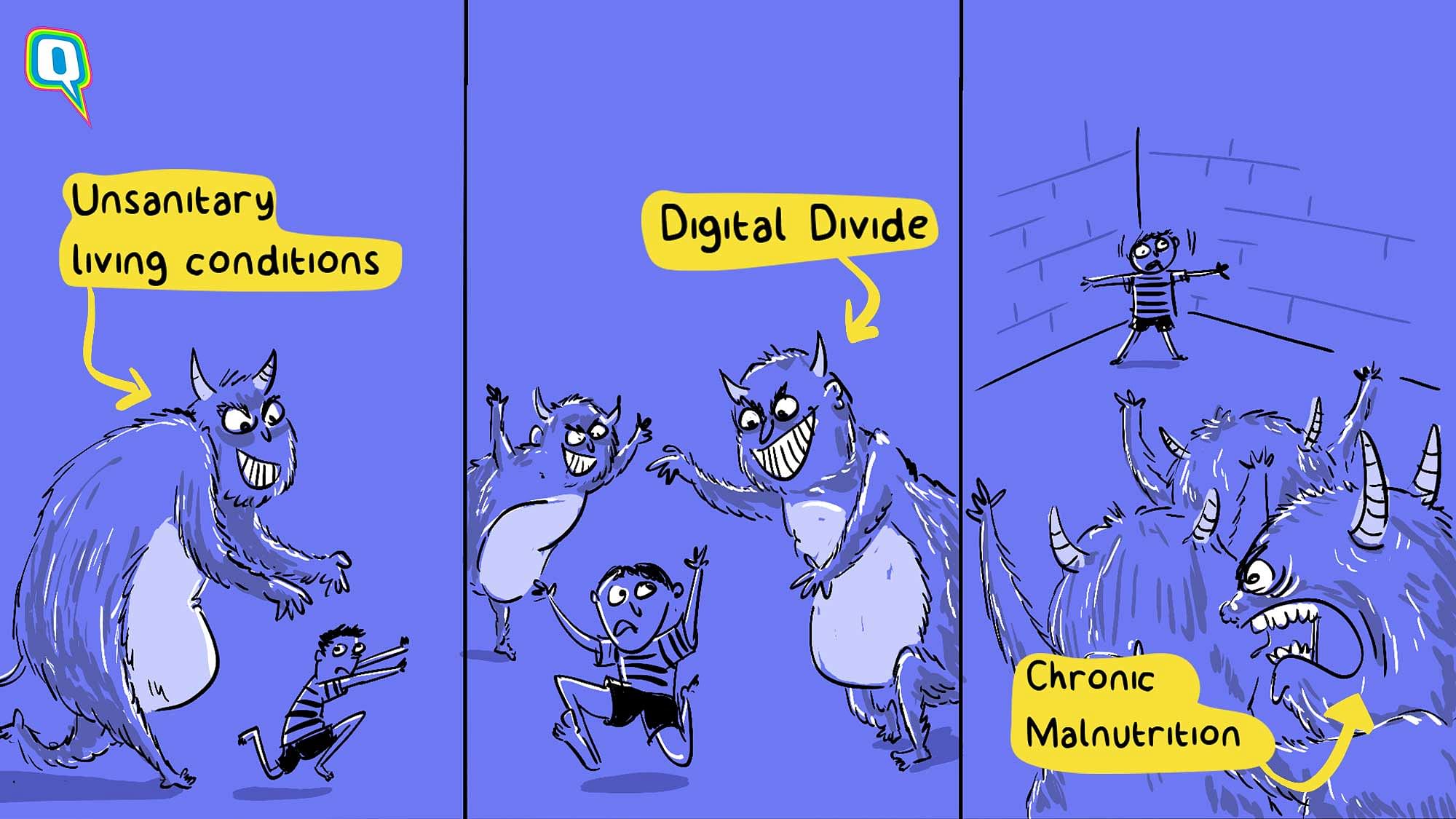For Children in India, The Monsters Under the Bed Are Kaafi Real
COVID-19 has worsened the already dismal statistics relating to nutrition, mortality, and education among children.
Over a year and a half later, the COVID-19 pandemic has contributed significantly to the already dismal statistics relating to nutrition, mortality rate, and education among children in India.
(Photo: Aroop Mishra/The Quint)

Over a year and a half later, the COVID-19 pandemic has contributed significantly to the already dismal statistics relating to nutrition, mortality, and education among children in India.
In the educational sphere, primary and upper primary schools have been closed in India for more than 500 months, with a recent survey of nearly 1,362 schoolchildren (Classes 1 to 8) in underprivileged households indicating that the closure has drastically brought down the literacy rate among students.
This is certainly worse in Dalit and Adivasi households.
With the transformation of education amid the pandemic, only 8 percent of children study regularly in rural areas. In urban areas, this number was 24.
Moreover, only nine percent of all sample children had their own smartphone.
According to India's child wasting statistics released by the Health Ministry, 21 percent of all children under 5 years remain ‘unproductive’ or ‘wasted’ (due to low weight-for-height) and 38 percent have stunted growth.
With rampant chronic malnutrition, the survey on schoolchildren from Classes 1-8 also indicated that midday meals were discontinued in all sample states.
While 80 percent of parents stated that they had received some provisions in the first few months of the pandemic, this practice too, seemed to have been discontinued.
Meanwhile, in urban areas, as much as 20 percent households and 14 percent in rural areas did not receive anything.
(Kaafi Real is a series of cartoons on The Quint. You can check out all our other Kaafi Real cartoons here.)
(At The Quint, we are answerable only to our audience. Play an active role in shaping our journalism by becoming a member. Because the truth is worth it.)